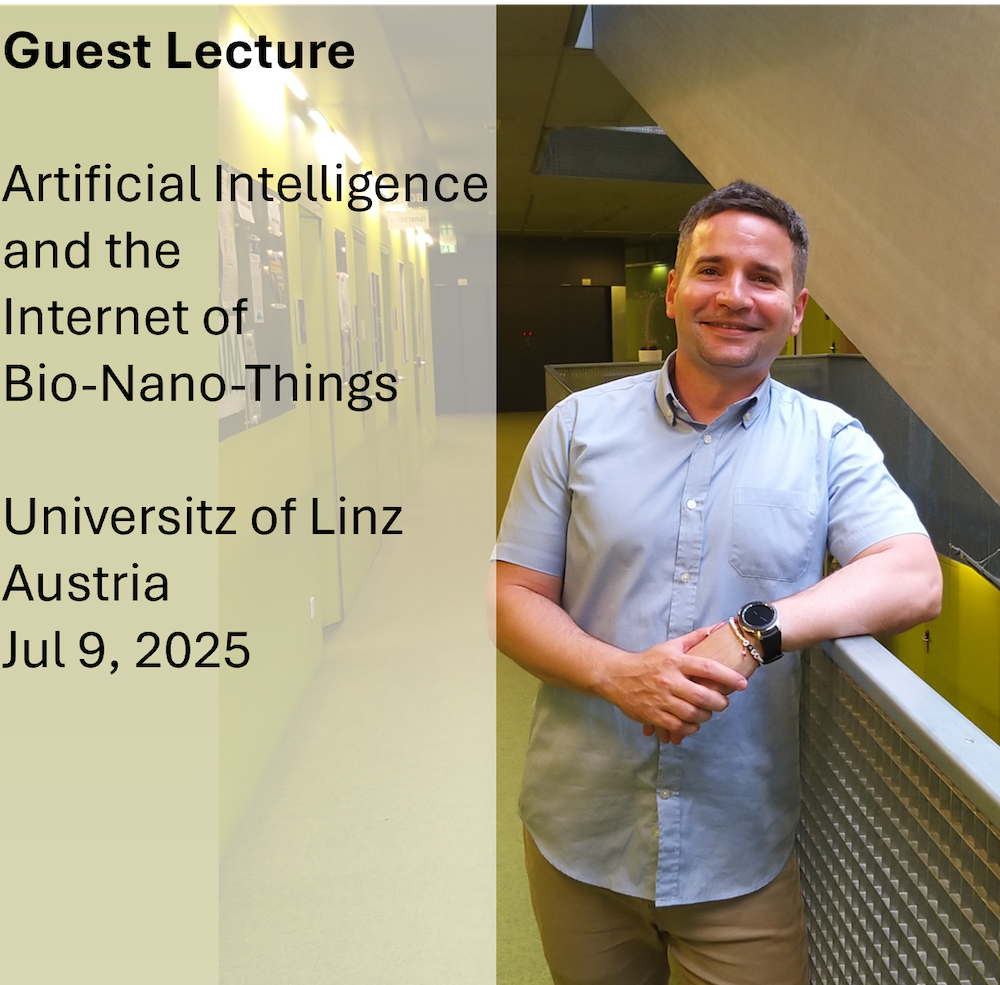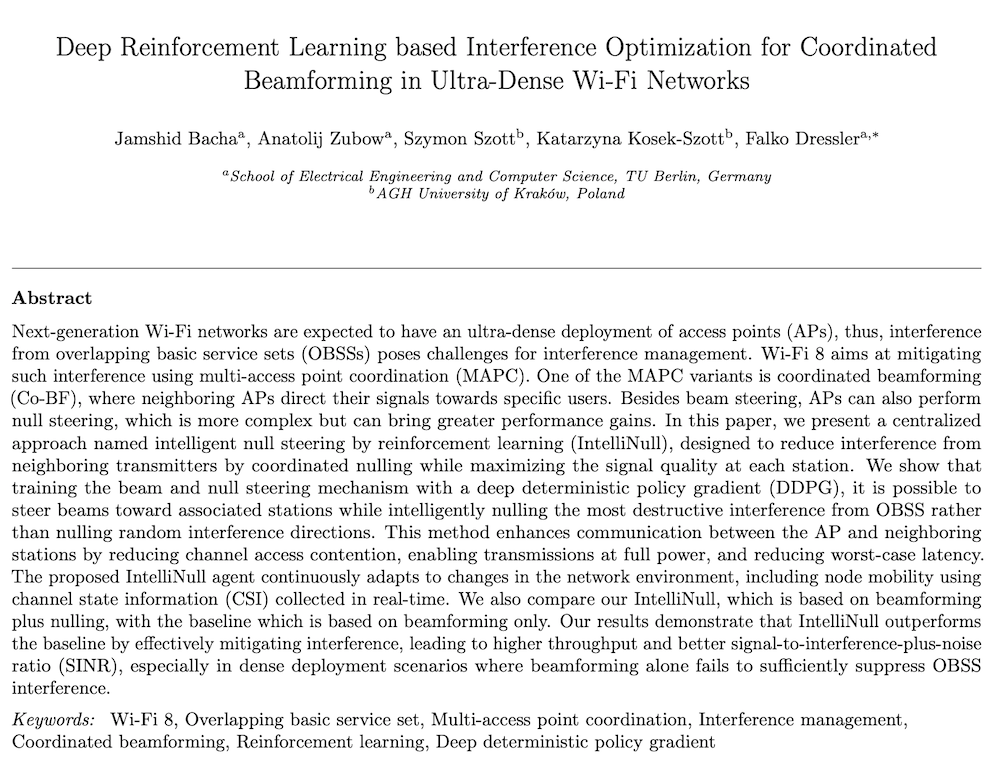Literature Database Entry
toledo2019stochastic
Karel Toledo, Hector Kaschel and Jorge Torres Gómez, "A stochastic approach for spectrum sensing and sensor selection in dynamic cognitive radio sensor networks," Elsevier Physical Communication, vol. 37, pp. 100879, December 2019.
Abstract
Cognitive Radio Sensor Networks (CRSN) is currently demanding to deal with spectrum scarcity through opportunistic spectrum access solutions. Opportunistic access to the available spectrum is achieved by determining spectrum holes, which in turn demands to run further signal processing operations on network nodes. Consequently, energy consumption to support these processing algorithms is increased and thus, it remains a major concern in CRSN. Some solutions address this issue via sensor selection during spectrum sensing in static CRSN. In this case, certain nodes participate in cooperative spectrum sensing (CSS) to guarantee proper performance, and the remaining nodes go to sleep to extend network battery lifetime. However, this strategy becomes difficult to apply to mobile sensor networks, where nodes change positions dynamically. This is the case of mobile nodes on Cognitive Radio Internet of Things (CR-IoT) networks, where sensor nodes consume significant energy to support CR operations. Due to the random displacement of nodes, new solutions must be developed in contrast to previous strategies based on on-off nodes from static CRSN, this to cooperate between nodes and also to reduce consumed energy. This paper reports a novel energy-efficient sensor selection technique applicable to dynamic CRSN. Stochastic approaches are developed to describe and determine the minimum total number of awake sensors to participate in CSS. This approach is particularly suited for solutions in which conditions, such as the position of nodes, change randomly. Proposed solution is obtained through the use of “here-and-now” approach considering statistic features of the random distance between each sensor node and a given fusion center. The methodology achieves energy consumption levels comparable to “wait-and-see” approach for networks of reduced size. Additionally, we provide further insights into the statistical nature of the problem to state a proper problem formulation, then to devise solutions accordingly. The analysis and performance of the proposed solution are discussed and illustrated with the aid of simulations.
Quick access
Original Version ![]() (at publishers web site)
(at publishers web site)
BibTeX ![]()
Contact
Karel Toledo
Hector Kaschel
Jorge Torres Gómez
BibTeX reference
@article{toledo2019stochastic,
author = {Toledo, Karel and Kaschel, Hector and Torres G{\'{o}}mez, Jorge},
doi = {10.1016/j.phycom.2019.100879},
title = {{A stochastic approach for spectrum sensing and sensor selection in dynamic cognitive radio sensor networks}},
pages = {100879},
journal = {Elsevier Physical Communication},
issn = {1874-4907},
publisher = {Elsevier},
month = {12},
volume = {37},
year = {2019},
}
Copyright notice
Links to final or draft versions of papers are presented here to ensure timely dissemination of scholarly and technical work. Copyright and all rights therein are retained by authors or by other copyright holders. All persons copying this information are expected to adhere to the terms and constraints invoked by each author's copyright. In most cases, these works may not be reposted or distributed for commercial purposes without the explicit permission of the copyright holder.
The following applies to all papers listed above that have IEEE copyrights: Personal use of this material is permitted. However, permission to reprint/republish this material for advertising or promotional purposes or for creating new collective works for resale or redistribution to servers or lists, or to reuse any copyrighted component of this work in other works must be obtained from the IEEE.
The following applies to all papers listed above that are in submission to IEEE conference/workshop proceedings or journals: This work has been submitted to the IEEE for possible publication. Copyright may be transferred without notice, after which this version may no longer be accessible.
The following applies to all papers listed above that have ACM copyrights: ACM COPYRIGHT NOTICE. Permission to make digital or hard copies of part or all of this work for personal or classroom use is granted without fee provided that copies are not made or distributed for profit or commercial advantage and that copies bear this notice and the full citation on the first page. Copyrights for components of this work owned by others than ACM must be honored. Abstracting with credit is permitted. To copy otherwise, to republish, to post on servers, or to redistribute to lists, requires prior specific permission and/or a fee. Request permissions from Publications Dept., ACM, Inc., fax +1 (212) 869-0481, or permissions@acm.org.
The following applies to all SpringerLink papers listed above that have Springer Science+Business Media copyrights: The original publication is available at www.springerlink.com.
This page was automatically generated using BibDB and bib2web.





